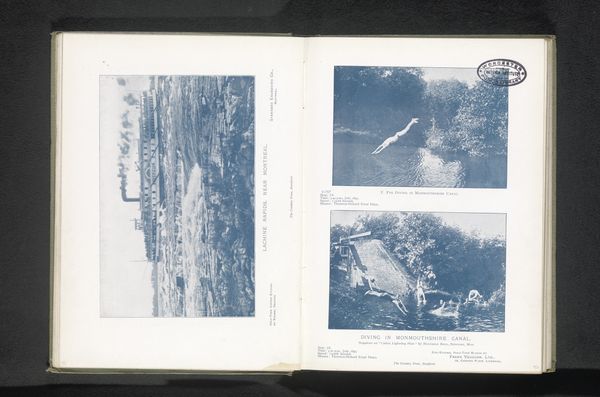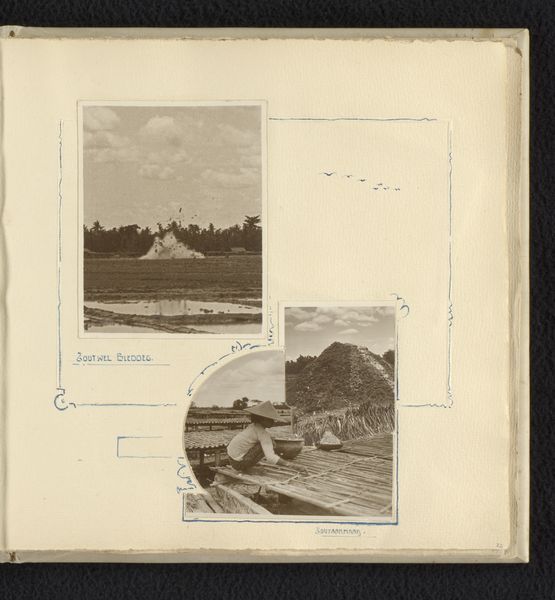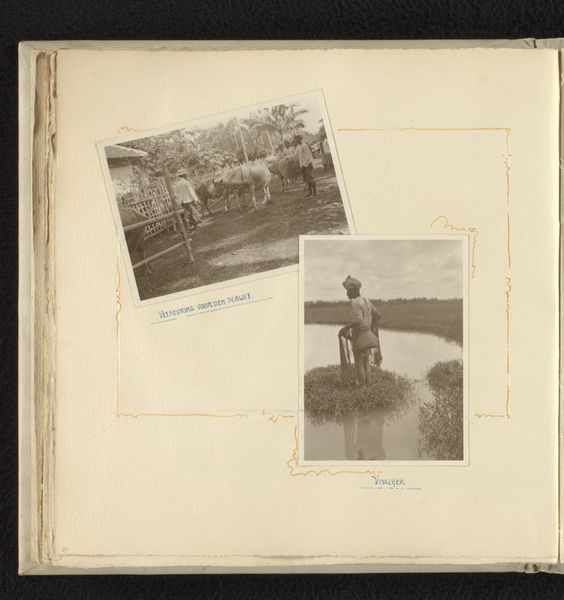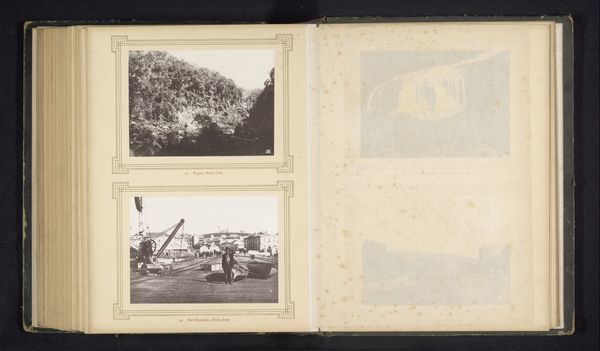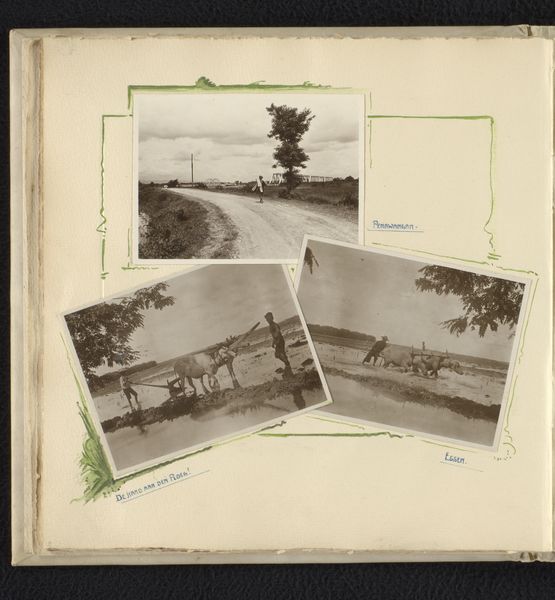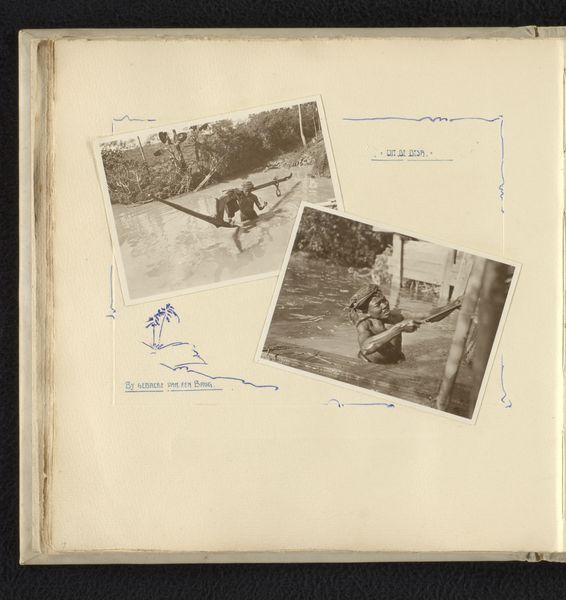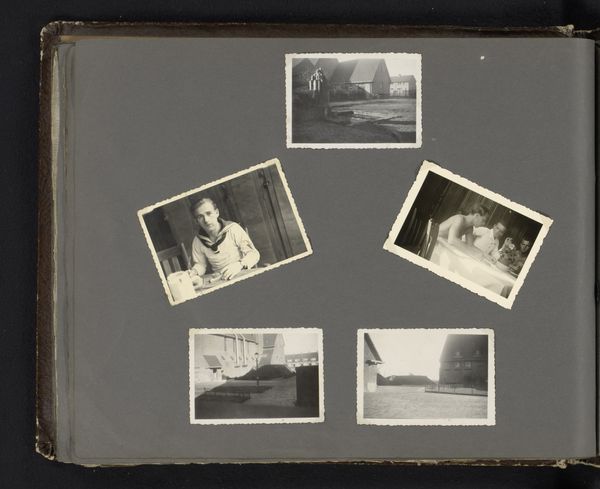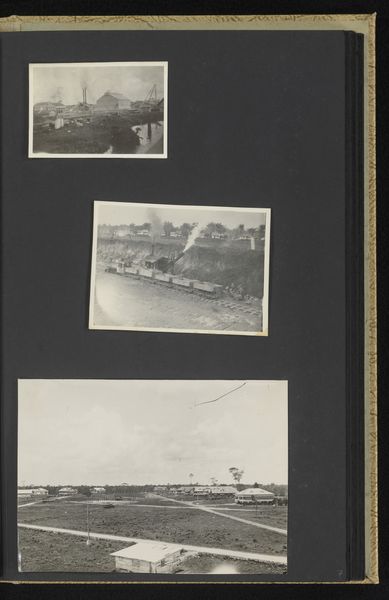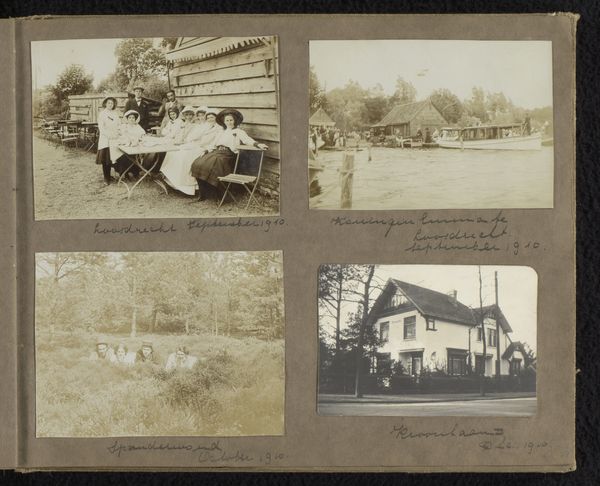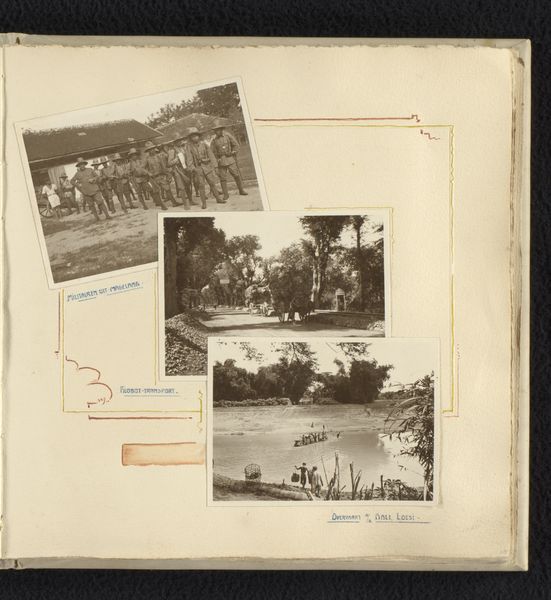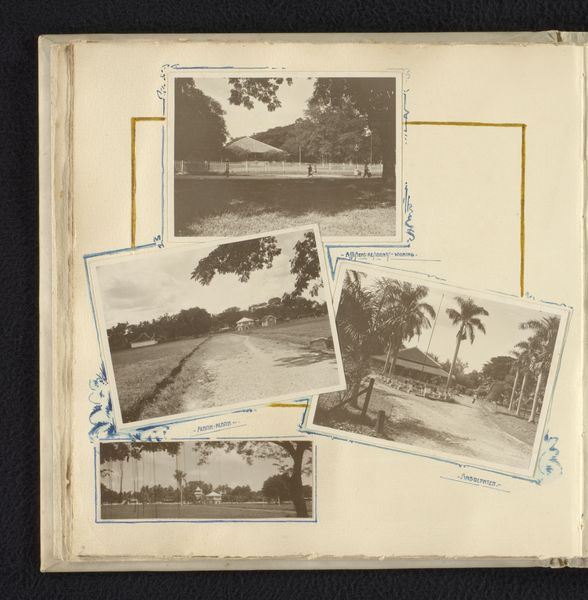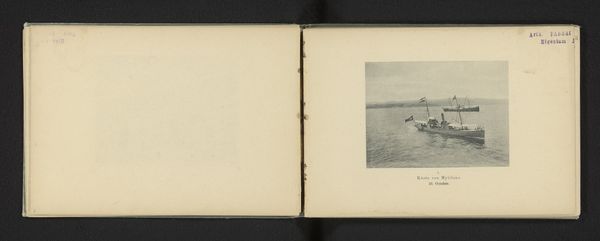
Dimensions: height 240 mm, width 240 mm
Copyright: Rijks Museum: Open Domain
Editor: This is a page from an album containing a number of albumen print photographs titled "Verkeer bij hoogwater in Grobogan," or "Traffic at High Water in Grobogan" dated sometime between 1910 and 1928. There’s something unsettling about the way these serene images are juxtaposed with text and drawings in the album format; it feels like a commentary. What's your take on this work? Curator: I agree, there is something deeply unsettling about the juxtaposition. The placid images of life disrupted by flooding—a boat overloaded, streets turned to rivers— speak volumes about colonial impact. The imposed grid of the album itself becomes a tool, organizing and perhaps attempting to control a narrative of natural disaster. Yet the handwritten notes, like "Still Going Strong..." subvert that control, revealing resilience. How does this resonate with our understanding of environmental exploitation within colonial projects? Editor: It highlights the tension, doesn't it? There’s the colonizer’s attempt to document, organize, even aestheticize, while the reality of the flooded landscape speaks to the environmental cost and the resilience of the local population. Do you think the "street photography" tag applies, given the social and historical circumstances depicted here? Curator: Absolutely, but not in the conventional sense. These aren’t just candid shots; they are documents, evidence even, of disrupted lives and infrastructure under colonial rule. The 'street' is redefined by the flood, exposing the precarity inherent in the power dynamics of the time. It encourages a powerful contemporary re-reading of history. What kind of conversation does this suggest? Editor: I see what you mean. It goes beyond just capturing a moment to showing the impact of historical and social structures. Curator: Precisely. Perhaps it gives insights on the social stratification and resilience of indigenous peoples amid environmental duress during Dutch rule. Editor: I’ve never really looked at photography through such an intersectional lens. Curator: Exactly! Every object carries such complex hidden voices and messages. Thank you for allowing us to unearth a few today.
Comments
No comments
Be the first to comment and join the conversation on the ultimate creative platform.
